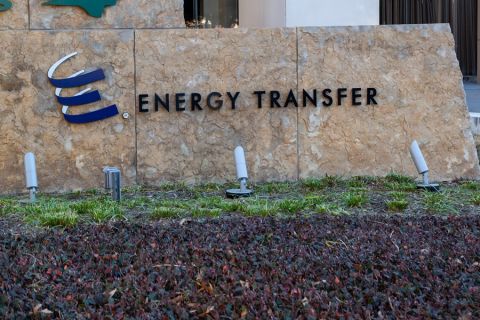
The success of producing shale gas in the Marcellus play in Pennsylvania has not been matched by sufficient pipeline infrastructure to deliver to the Northeast. Source: Helge Hansen/Statoil
Natural gas producers had been waiting for a winter like the one that froze half the country in 2013-14.
The Marcellus Shale, with its mammoth production, seemed to be in the pole position to deliver to the Northeast. However, with the winter over, questions about infrastructure are beginning to dog a play with tremendous potential but significant bottlenecks.
Coal, not gas, got the best of the winter spoils, rebounding to 41.8% of total fuels used for electrical power from 40.4% in December, said Richard Hastings, macro strategist for Global Hunter Securities.
“Higher natural gas prices in January revealed that natural gas is not yet ready to knock out coal from the center stage, and it
could take until at least 2017 before its position is more competitive,” Hastings said.
The average cost of natural gas delivered to New England was estimated by the U.S. Energy Information Administration (EIA) at $17.74/MMBtu, an 83.8% increase on a y/y basis, Hastings said.
“This was simply a destructive event, and strongly points to lagging pipeline delivery infrastructure in the region, in addition to the risks posed by pipeline imports into New England from Canada,” he said.
The effects of the Polar Vortex have catalyzed new pipeline proposals, said Sarah Akers, senior analyst with Wells Fargo Securities in a recent report.
“We’ve seen heightened interest in expanding gas pipeline capacity as displayed by an April announcement by Duke Energy and Piedmont Natural Gas” for a second major natural gas pipeline into North Carolina, Akers said. “When temperatures dropped in January, Northeast gas prices spiked as infrastructure constraints—mainly the lack of gas pipelines tapping the Marcellus—prevented lower-cost supply from serving the heightened demand.”
In addition to the price inefficiency, the episode left gas users wanting supply diversity and seeking to add redundancy to the system for reliability purposes. While the need and desire for enhanced access to diverse gas supplies is not a new concept, the Polar Vortex may be the catalyst needed to get these projects over the finish line.
The proposed North Carolina pipeline would have capacity up to 900 MMcf/d. Transco operates the state’s only major pipeline, which transports gas from the Gulf of Mexico. Capacity is up to 9.8 billion cubic feet per day (Bcf/d) due in part to Duke’s plans to continue expanding its gas generation portfolio and the strong gas demand growth that Piedmont has been experiencing for years, Akers said.
While it remains early in the process for another North Carolina pipeline—proposals are to be selected by the end of 2014 and completed by late 2018—Akers said the project would be sizeable, possibly costing more than $1 billion.
In the Marcellus itself, the same problems of takeaway capacity and oversupply can be found.
In the past two years, rig counts have dropped by nearly half in the northeast Marcellus as operators concentrate on gas-rich areas and pricing has declined.
The 2014 year-to-date average has been 26 rigs, slightly below operator guidance, said Bob Brackett, senior analyst for Bernstein Research, in an April report.
In January, Marcellus Shale gas production came in at estimated 13.98 Bcf/d, according to the EIA. By March, production rates improved to 14.15 Bcf/d and estimates of 14.47 Bcf/d for April.
Nevertheless, the Marcellus is a powerhouse. In about four years, the region has gone from negligible production to about 12 Bcf/d at the end of 2013 and is forecast to grow to 18 Bcf/d by 2016, Brackett said.
The Northeast U.S. historically imported essentially all the gas that it used. Average gas demand was 15 Bcf/d, though it could rise to 25-30 Bcf/d in the winters, Brackett said.
“The Marcellus has forever changed Northeast U.S. gas balances,” he said.
And therein lies what Brackett terms the “Marcellus differentials” problem: 7.5 Bcf/d of pipeline capacity out, with production at that level currently. Three major pipelines will add capacity by 2.9 Bcf/d by the end 2017.
If production comes in as anticipated, Brackett sees a total of 7.7 Bcf/d of pipeline capacity at the end of 2014 and 8.9 Bcf/d to end 2015.
“Overall, supply and ‘demand’ are forecast to be extremely close in this period, with high likelihood of oversupply of at least 0.6 Bcf/d and potentially more if drilling efficiencies continue to improve,” Brackett said. “There is simply not going to be enough takeaway capacity from the region for everyone.”
Recommended Reading
For Sale? Trans Mountain Pipeline Tentatively on the Market
2024-04-22 - Politics and tariffs may delay ownership transfer of the Trans Mountain Pipeline, which the Canadian government spent CA$34 billion to build.
Energy Transfer Announces Cash Distribution on Series I Units
2024-04-22 - Energy Transfer’s distribution will be payable May 15 to Series I unitholders of record by May 1.
Balticconnector Gas Pipeline Back in Operation After Damage
2024-04-22 - The Balticconnector subsea gas link between Estonia and Finland was severely damaged in October, hurting energy security and raising alarm bells in the wider region.
Wayangankar: Golden Era for US Natural Gas Storage – Version 2.0
2024-04-19 - While the current resurgence in gas storage is reminiscent of the 2000s —an era that saw ~400 Bcf of storage capacity additions — the market drivers providing the tailwinds today are drastically different from that cycle.




